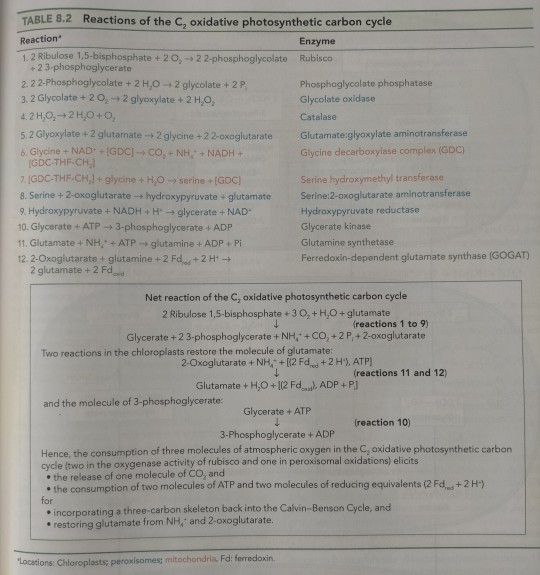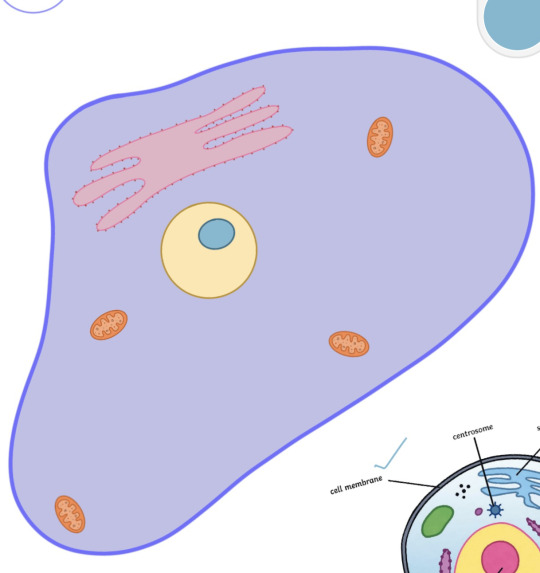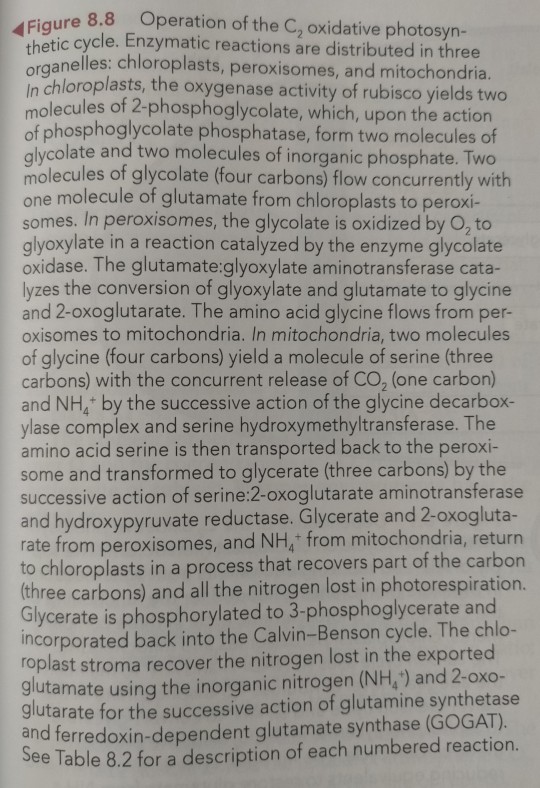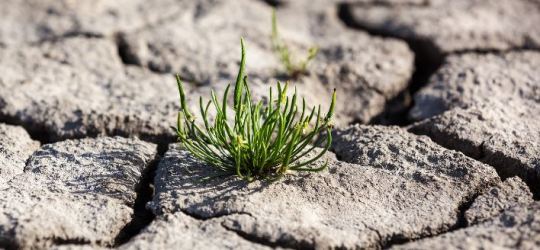#peroxisomes
Text

Vital for Immunity
Importance of peroxisomes – organelles inside cells that are involved in lipid metabolism – for immune cell development and immune responses revealed by defects seen in a peroxisome-deficient mouse model of the congenital disorder Zellweger disease
Read the published research article here
Image from work by Brendon D. Parsons and Daniel Medina-Luna, and colleagues
University of Alberta, Department of Laboratory Medicine and Pathology, Edmonton, AB, Canada
Image originally published with a Creative Commons Attribution – NonCommercial – NoDerivs (CC BY-NC-ND 4.0)
Published in Cell Reports, February 2024
You can also follow BPoD on Instagram, Twitter and Facebook
#science#biomedicine#immunofluorescence#biology#congenital disorders#zellweger disease#peroxisomes#organelles#cells#immunity
15 notes
·
View notes
Text
Peroxisomes

5 notes
·
View notes
Text
In peroxisomes, glycolate oxidase catalyzes the oxidation of glycolate by O2, producing H2O2 and glyoxylate (see Table 8.2, reaction 3). (...) Subsequently, glutamine and 2-oxoglutarate are substrates of ferredoxin-dependent glutamate synthase (GOGAT) for the production of two molecules of glutamate (see Table 8.2, reaction 12). The reassimilation of NH4+ into the photorespiratory cycle restores glutamate for the action of the peroxisomal glutamate:glyoxylate aminotransferase in the conversion of glyoxylate to glycine (see Table 8.2, reaction 5).
In the oxygen cycle, rubisco and glycolate oxidase catalyze the incorporation of two molecules of O2 each (eight oxygen atoms) when two molecules of ribulose 1,5-bisphosphate enter the C2 oxidative photosynthetic carbon cycle (see Table 8.2, reactions 1 and 3). However, catalase releases one molecule of O2 from two molecules of H2O2 (two oxygen atoms) (see Table 8.2, reaction 4).

For salvaging two molecules of 2-phosphoglycolate by conversion to one molecule of 3-phosphoglycerate, photophosphorylation provides one molecule of ATP necessary for the transformation of glycerate to 3-phosphoglycerate (see Table 8.2, reaction 10), while the consumption of NADH by hydroxypyruvate reductase (see Table 8.2, reaction 9) is counterbalanced by its production by glycine decarboxylase (see Table 8.2, reaction 6). In photorespiration, nitrogen:
enters into the peroxisome through the transamination step catalyzed by the glutamate:glyoxylate aminotransferase (two nitrogen atoms) (see Table 8.2, reaction 5), and
leaves the peroxisome (1) as NH4+ (one nitrogen atom), in the reaction catalyzed by the glycine decarboxylase-serine hydroxymethyltransferase complex (see Table 8.2, reactions 6 and 7) and (2) in the transamination step catalyzed by serine:2-oxoglutarate aminotransferase (one nitrogen atom) (see Table 8.2, reaction 12).
"Plant Physiology and Development" int'l 6e - Taiz, L., Zeiger, E., Møller, I.M., Murphy, A.
#book quotes#plant physiology and development#nonfiction#textbook#peroxisomes#photosynthesis#photochemistry#photorespiration#carbon cycle#oxidation#reduction#catalyze#hydrogen peroxide#rubisco
0 notes
Text
if i do well on today's test, i will change my user
#ramyeon with spam !#chiyuv's boyfhee era#which one of u will log into my acc to do my links/j#enzymes gna be the death of me bro WHY is peroxidase not related to peroxisome it doesnt make sense#see u in six hrs aye guess
8 notes
·
View notes
Text
Variants of superoxide dismutase are found in chloroplasts, peroxisomes, mitochondria, cytosol, and apoplast.
"Plant Physiology and Development" int'l 6e - Taiz, L., Zeiger, E., Møller, I.M., Murphy, A.
#book quote#plant physiology and development#nonfiction#textbook#variants#superoxide dismutase#chloroplast#peroxisome#mitochondria#cytosol#apoplast#plant cells
0 notes
Text
In my senior year of highschool we had a final project in AP Biology which was open-ended and could be just about anything. I rewrote (and performed) Thrift Shop to be about various branches of biology using the terminology that we had used that year. I titled it "Niche Shop."
These are the lyrics.
youtube
^ So you can follow along.
Hey… You wanna go niche shopping?
I’m an organism I’m alive
You can tell by how all my cells utilize
I’m- I’m- I’m growing, adapting and I’m showing,
This is my response
Walk into a niche like what up I’m an organism
Organ cells, organelles, carbon-based organ systems
If I’m surviving, got the traits you wanna copy
Got ‘em like-
“Damn, I better acquire mimicry”
Factor in, fitness my kin
Nat select me as a king
Dressed as a warning or I’m camouflaged from everything
The strongest or the fastest, sharper than Damascus
But if you really wanna live, you gotta have looooong…
Telomeres!
Hoofin’ it, wingin’ it, gonna optimal forage it
Passin’ up through the TD forest
Humus is a freebie nourish
Not rockin’ semelparity but, I am a rarity
1.8 meters too much room for a disparity!
An issue of polarity,
Irregularity of molarity,
Disrupts cellular activity
Lacking biologic dexterity
Dehydration synthesis, poly or di
Covalent bonding with all the mama-saccharides!
They had an H ion,
I took an H ion
For ETC so I can have the energy to hang on
Mito makes a maze of its membranes
To gain energy used in transduction signal pathway chains
I could take some bases,
Rough ‘em up and misplace
The wild types would be like
“Oh, he got the lactase”
I’m gonna eat some carbs
I need energy and I’m on guard
I’m- I’m- I’m drinking, drying and I’m linking,
This is glycosidic
I’m gonna bond some peptides
There are four structures so please stay wise
I’m- I’m- I’m asking, amino group and acid,
But don’t forget nucleotides (AUOHW!!)
What’chu know about being hydrophobic?
What’chu know about being hydrophilic?
I’m diffusion’, I’m movin’ right through that fatty bilayer
Meet the mosaic and all its necessary players!
Thank Aunt Ester, for linking glycerols and fatty acids
It’s an asset keep ‘em like molasses
Metabolism, you can have in catabolic (bolic)
Minus delta G or you can have it anabolic (bolic)
Prokaryotes, no nucleus
All have membranes like eukaryotes
Cyto-structure and ribosomes and DNA in that cytoplasm
Eukaryotes have organelles in that cytoplasm
Lysosomes and vacuoles in that cytoplasm
They’re like “oh, that peroxisome, that’s hella tight”
I’m like “yo… that makes hydrogen peroxide”
Competitive inhibition will render us quickly illin’
Catalyse that catalase to cure our condition
Don’t forget, ‘bout the mosaic composition
Don’t forget, about what lets somethin’ else in
That receptor is hella though
But havin’ a common one in a pandemic is a hella NO
Peep gang, come take a look at my DNA
Find all the nights I spent with retroviral RNA
[Interlude]
In your DNA … viral RNA … turned to DNA … and then to RNA
Immune … poppin’ cells … yeah!
I’m gonna place some tags
Ubiquitin be quittin’ on all these proteins
This cellular machine, RNA in vaccines
An acid for every codon
I made God to be in my image
All these kids descend from my lineage
I have eternal DNA
My fitness is secured through advantageous traits
[X2]
As DNA replicates
Every cell from a cell - this never dates
I’m- I’m- I’m growing, adapting and I’m showing,
This is my response
Are those your Grandpa’s genes?
#Sue Hope This Doesnt Incriminate Me Somehow.#BTW since i was a senior i had early graduation so. I recorded it and emailed it to my teacher#I Will Never Know if she .. played it for the class? ... If anyone else heard it..?#i .. hope she did show it .. becasue .. THEY WOULD HAVE GOTTEN IT !!!!
4 notes
·
View notes
Note
Hey, so I read your ask on that other blog about adiponectin and how it basically converts fat from visceral to subcutaneous. Do you know if there's any supplements or medicaments one could take to increase adiponectin levels? purely hypothetically, of course.
Yes, MCT oil boosts adiponectin levels. See these studies for more info:
Lower weight gain and higher expression and blood levels of adiponectin in rats fed medium-chain TAG compared with long-chain TAG
Medium Chain Fatty Acids Are Selective Peroxisome Proliferator Activated Receptor (PPAR) γ Activators and Pan-PPAR Partial Agonists
Genetic modulation of PPARgamma phosphorylation regulates insulin sensitivity
4 notes
·
View notes
Text
I'm drawing a cell diagram so I have my own image to use for presentations and stuff. but I'm having trouble picking colours for all the organelles. so I would like to task you - mutuals, followers, maybe even mutuals in law if someone decides to reblog this.. anyone who sees this - with suggesting colours for the organelles I have left!
here's what I have currently:

[id: an in-progress drawing of a cell with pale periwinkle cytoplasm, a pink rough endoplasmic reticulum with red ribosomes, a light yellow nucleus with blue-green nucleolus, and a few orange mitochondria. /end id]
the organelles that I need colours for are:
1. smooth endoplasmic reticulum (like rough ER but no dots - should I make it same colour??)
2. lysosome (small orb)
3. peroxisome (medium orb)
4. Golgi apparatus (silly looking blob guys)
5. vacuole (lone blobs)
6. centrosome (orb with tiny orbs)
if your favourite organelle isn't here feel free to suggest it with a colour and maybe I'll add it!
#petchyposting#described#academic adventures#biology#ok to rb.#also if u have synaesthesia-informed suggestions I'd love to know :)
5 notes
·
View notes
Text
The Cell
Cells are considered the smallest unit of life. Cells create living organisms and can be split between either prokaryotic and eukaryotic. We can consider ourselves, humans, as eukaryotes. Human cells consist of membrane bound DNA and various organelles with their own unique purpose. Examples of organelles include, mitochondria, ribosomes, lysosomes, Golgi apparatus, cytoplasm, vacuoles, nucleus, peroxisomes, smooth ER, and rough ER. Plant cells are also considered eukaryotes and in addition to similar organelles as human cells also contain a cell wall, chloroplasts, and a central vacuole. Prokaryotes are used to define mostly bacteria which do not have any organelles or their DNA membrane bound. Prokaryotic cells contain a cell wall, cell membrane, capsule, DNA, ribosomes, and fimbriae and/or flagellum.
3 notes
·
View notes
Text
Hepatic Arterial Infusion Radiation of 5-gelatin with regard to Individuals along with Unresectable Hard working liver Metastases through Intestinal tract Most cancers Refractory to Standard Systemic Radiation: A Multicenter Retrospective Research
The end result demonstrated that the growth regarding bacterial cells along with the creation of alpha-amylase on a wheat or grain bran substrate could possibly be portrayed by simple versions including the actual mathematical concept of every single cycle as well as the alternative in dried up substrate excess weight over the incubation time. Fresh information obtained from the series of set fermentations were utilized for you to verify the actual types offered. In both cases, the particular design simulator harmonized nicely together with the trial and error studies, making it very easy to conclude the types could be successfully used for the introduction of development as well as alpha-amylase creation throughout solid-state fermentation techniques. (C) The year 2010 Elsevier B.Sixth is v. All rights earmarked.Aspires: The actual INSPIRON-I tryout can be a first-in-man look at the security as well as effectiveness from the Inspiron drug-eluting stent, a new sirolimus-eluting stent together with abluminal biodegradable polymer bonded coating as well as thin cobalt-chromium blend. Approaches along with benefits: This is the randomised, multicentre comparability among Inspiron as well as a stent sticking with the same steel structure however with out polymer layer or medicine elution (Cronus). The key objective was to measure the in-segment overdue decline (LLL) at 6 months. Secondary endpoints incorporated per cent in-stent impediment since assessed by simply intravascular sonography (IVUS) with #Link# half a year as well as significant unfavorable cardiac activities (MACE). Fifty-eight individuals have been enrollment (60 lesions), 22 with regard to Inspiron as well as 19 pertaining to Cronus. Standard specialized medical as well as angiographic qualities regarding equally organizations were similar. In half a year, the particular in-segment LLL has been lowered in the Inspiron group when compared to handle party (3.Nineteen +/- 3.16 millimeters as opposed to. 0 #Link# .Fifty eight +/- 0.Some mm, correspondingly; s less space-consuming than 0.001), and also the pct neointimal impediment (Seven.8-10 +/- Seven.1% versus. Twenty six.5 +/- Eleven.4%; r smaller compared to 3.001). In two-year follow-up, likelihood of MACE ended up being comparable in between groups (Seven.In search of compared to. 21 years of age.1%, correspondingly; p=0.Something like 20), using reduced target patch revascularisation regarding Inspiron (2 as opposed to. Twenty one.1%, respectively; p=0.01) no stent thrombosis. A conclusion: Sirolimus eluted from a great abluminal naturally degradable polymer bonded over a cobalt-chromium alloy proven good at lowering restenosis with few months.Although peroxisome proliferator-activated receptor agonists are generally approved to boost cardio risk factors, their particular cardiovascular safety factors are dubious. We all therefore reviewed your materials to distinguish milestone randomized manipulated studies considering the effects of peroxisome proliferator-activated receptor gamma agonists (pioglitazone along with rosiglitazone), alpha agonists (fenofibrate along with gemfibrozil), and also griddle agonists (bezafibrate, muraglitazar, ragaglitazar, tesaglitazar, and aleglitazar) on aerobic outcomes. Pioglitazone may well slightly reduce heart activities but additionally might increase the probability of kidney cancer malignancy. Rosiglitazone boosts the #Link# risk of myocardial infarction and has been recently pulled in Eu along with constrained in america. Fibrates boost cardio results simply throughout choose subgroups: fenofibrate within diabetic patients along with metabolism syndrome, gemfibrozil in sufferers with dyslipidemia, as well as bezafibrate within patients using diabetes or perhaps metabolic affliction.
1 note
·
View note
Text
Mpf1 is a novel factor that affects the dual distribution of tail-anchored proteins between mitochondria and peroxisomes
BioRxiv: http://dlvr.it/T6Fypm
0 notes
Text
This network of coordinated enzymatic reactions, also known as photorespiration, occurs in chloroplasts, leaf peroxisomes, and mitochondria (Figure 8.8, Table 8.2). (...) In chloroplasts of land plants, 2-phosphoglycolate phosphatase catalyzes the rapid hydrolysis of 2-phosphoglycolate to glycolate (see Figure 8.8 and Table 8.2, reaction 2). (...) The peroxisomal catalase breaks down the H2O2, releasing O2 and H2O (see Figure 8.8 and Table 8.2, reaction 4). (...) Glycine exits the peroxisomes and enters the mitochondria where a multienzyme complex of glycine decarboxylase (GDC) and serine hydroxymethyltransferase catalyzes the conversion of two molecules of glycine and one molecule of NAD+ into one molecule each of serine, NADH, NH4+, and CO2 (see Figure 8.8 and Table 8.2, reactions 6 and 7). (...) The newly formed serine diffuses from the mitochondria back to the peroxisomes for donation of it's amino group to 2-oxoglutarate via transamination catalyzed by serine:2-oxoglutarate aminotransferase, forming glutamate and hydroxypyruvate (see Figure 8.8 and Table 8.2, reaction 8). Next, an NADH-dependent reductase catalyzes the transformation of hydroxypyruvate into glycerate (see Figure 8.8 and Table 8.2, reaction 9). Finally, glycerate reenters the chloroplast, where it is phosphorylated by ATP to yield 3-phosphoglycerate and ADP (see Figure 8.8 and Table 8.2, reaction 10). (...) In the chloroplast stroma, glutamine synthetase catalyzes the ATP-dependent incorporation of NH4+ into glutamate, yielding glutamine, ADP, and inorganic phosphate (see Figure 8.8 and Table 8.2, reaction 11).



"Plant Physiology and Development" int'l 6e - Taiz, L., Zeiger, E., Møller, I.M., Murphy, A.
#book quotes#plant physiology and development#nonfiction#textbook#photosynthesis#photochemistry#photorespiration#chloroplasts#peroxisomes#plant cells#hydrolysis#phosphate#serine#mitochondria#glutamine#adp
0 notes
Text
Effect of Drought Stress on Yield

The availability of water is the main driver of ecosystem processes.
According to Farooq et al. (2009), the impact of water stress on nutrients mineralization supply depends on the severity and duration of drying and re-humidification cycles. This is attributed to various factors, such as type of soil affecting the water potential, the evapotranspiration demand, the frequency and the appearance of precipitation. Therefore, drought stress influences the change in the nitrogen and phosphorus cycles of plants (Sardans and Penuelas, 2012).
The concentrations of nitrogen (N) and phosphorus (P) in plants are basic indicators of limitation of N and P elements (Aerts and Chapin, 2000; Gusewell, 2004).
The stress of drought delays the growth of the plant due to the reduction of Absorption, redistribution and transport of N and P (Rouphael et al., 2012). In most studies, plants have shown a decrease in the absorption of N and P with a decrease in soil moisture (Sardans and Penuelas, 2012). Soil reduction water stress and drought reduce the diffusion of nutrients and the mass flow in the soil (Lambers et al., 2008) and decreased nutrient absorption by reducing nutrient supply by mineralization (Sanaullah et al., 2012). The stress of the drought could be eliminated by frequent re-moistening of the soil, which results in an improvement mineralization, accredited to release nutrients from dead organisms that have accumulated during the drying phase (Austin et al., 2004).
The stress of drought is the most alarming factor with the rapid change in the global climate, thus affecting the growth and yield of plants unfavorably (Vurukonda et al., 2016; Chandra et al., 2018). The species of jujubes are sclerophyllous shrubs or trees with a high degree of resistance against stress due to drought. Several studies have examined their morphology and physiological adaptations against water deficit (Maraghni et al., 2011; Kulkarni et al., 2010). The ability of jujube species to thrive under the drought conditions have been characterized due to a mixture of tolerance and avoidance mechanisms, including stomatal and osmotic control adjustment (Maraghni et al., 2011). During the state of water deficit, usually the the plant began to react against the biochemical adaptations that increased the synthesis of organic solutes, including sugar alcohol, soluble sugars, betaines and proline (Serraj and Sinclair, 2002). These organic solutes cause a cellular osmotic modification, a protection of the membrane integrity, ROS detoxification and enzyme stabilization (Attipali et al., 2004).
In a state of water deficit, the plant triggers continuous reactive oxygen species production (ROS) in mitochondria, peroxisomes and chloroplasts (Apel and Hirt, 2004). In addition, excessive production of ROS in plant cells has a tendency to damage cellular components, including proteins, lipids, DNA and finally destroy photosynthetic pigments (Mittler, 2002). Plant cells have modified their enzyme [Guaiacol peroxidase (POD), Superoxide dismutase (SOD), catalase (CAT)] and non-enzymatic (XT-carotenes, ascorbate, atocopherol, glutathione) defense system for recover the ROS (Sofo et al., 2008). Under the stress of drought, the behavior of numerous studies have shown that the activity of antioxidant enzymes is directly correlated with their resistance or tolerance to abiotic stress (Dichio et al., 2003; Sofo et al., 2004; Guo et al., 2006). Although jujube is considered a resilient crop but over time, drought stress has become a more serious threat in arid areas regions that limit the growth of the jujube plant and reduce its productivity.
Therefore, pruning (Chen et al., 2016) plant cover and genetic selection (Ji et al., 2019) are the most used approaches to mitigate the drought stress in the jujube but these are methods that take time. Zhang et al. (2020) reported that microbial populations in the rhizosphere transfer into drought-tolerant plants help their host plants adapt to their drought stressful conditions.
Genetic studies of jujube gene families have revealed their role in stress and defense responses. Approximately 854 gene families have been functionally labeled for their stress response. During osmotic stress conditions, some genes showed a higher expression at the level of the fruits stages of development that have strongly supported the potential of jujube towards drought resistance. Some pathogenesis proteins, including chitinases have been activated against biotic and abiotic stresses in plants.
Jujube is the most prominent fruit crop in the rainfed regions and performs well in conditions of severe drought. Branched and hairy physiology the jujube leaves help it to minimize water loss; therefore, it can withstand for a long time dry periods and has the wonderful tendency to endure drought conditions (Mani and Suresh, 2018). Indian jujube withstands extreme drought conditions during the growing season, low winters during dormancy and salt water (Jain and Dass, 1988; Maruza et al., 2017). Cruz et al.
(2012) demonstrated that Z. jujuba can cope with an extreme water deficit while maintaining the foliar turgor which ensures a good gas and foliar exchange productivity. However, in low-income areas of Pennsylvania and In Washington State, jujube plants are bearing fruit. Fruiting has also been noticed in some cultivars in north Florida where Indian jujube has been found more sensitive to frost; however, its fruits were of inferior quality.
North-West China has an arid climate and well-known Chinese jujube cultivars. Annual rainfall is normally less than 200 mm in arid areas, from 200 to 450 mm in semi-arid and 450-650 mm in the sub-humid regions (Qu and Wang, 1993). In cold regions, deserts and mountains, jujubes can grow well various climates (Rushforth, 1999).
0 notes
Text
Scientists reconstruct assembly of the human centriole, image by image, for the first time [ Biology ]
Scientists reconstruct assembly of the human centriole, image by image, for
the first time [Highlights]
Cells contain various specialized structures—such as the nucleus,
mitochondria or peroxisomes—known as “organelles.
Centriole biogenesis, as in most organelle assemblies, involves the
sequential recruitment of sub-structural elements that will support its…
The largest repository of validated,…

View On WordPress
0 notes
Text
Integrative Omics reveals changes in the cellular landscape of yeast without peroxisomes
Peroxisomes are organelles that are crucial for cellular metabolism. However, these organelles play also important roles in non-metabolic processes, such as signalling. To uncover the consequences of peroxisome deficiency, we compared two extremes, namely Saccharomyces cerevisiae wild-type and pex3 cells, which lack functional peroxisomes, employing transcriptomics and quantitative proteomics technology. Cells were grown on acetate, a carbon source that involves peroxisomal enzymes of the glyoxylate cycle and does not repress peroxisomal proteins. Transcripts of peroxisomal {beta}-oxidation genes and the corresponding proteins were enhanced in pex3 cells. Peroxisome-deficiency also caused reduced levels of membrane bound peroxins, while the soluble receptors Pex5 and Pex7 were enhanced at the protein level. In addition, we observed alterations in non-peroxisomal transcripts and proteins, especially mitochondrial proteins involved in respiration or import processes. Our results not only reveal the impact of the absence of peroxisomes in yeast, but also represent a rich resource of candidate genes/proteins that are relevant in peroxisome biology. http://dlvr.it/T4ZQlP
0 notes
Text
Fluophore 488-Conjugated PEX14 Polyclonal Antibody
Fluophore 488-Conjugated PEX14 Polyclonal Antibody
Catalog number: B2015781
Lot number: Batch Dependent
Expiration Date: Batch dependent
Amount: 50 μL
Molecular Weight or Concentration: 41 kDa
Supplied as: Solution
Applications: a molecular tool for various biochemical applications
Storage: -20 °C
Keywords: Cell and organelle markers, NAPP2, Peroxin 14, Peroxisome Marker, PEX14, Pex14p, PTS1…

View On WordPress
0 notes